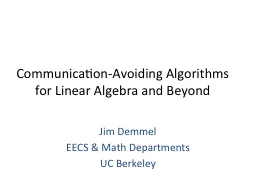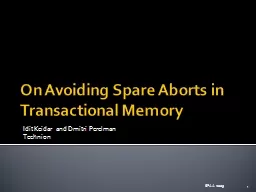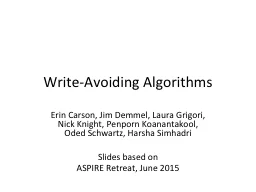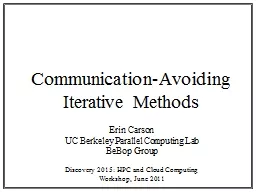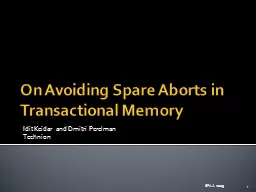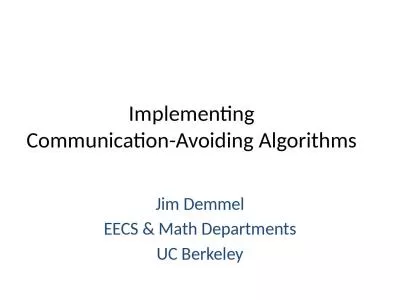PPT-Communication-Avoiding Algorithms
Author : celsa-spraggs | Published Date : 2015-09-21
for Linear Algebra and Beyond Jim Demmel EECS amp Math Departments UC Berkeley 2 Why avoid communication 13 Algorithms have two costs measured in time or energy
Presentation Embed Code
Download Presentation
Download Presentation The PPT/PDF document "Communication-Avoiding Algorithms" is the property of its rightful owner. Permission is granted to download and print the materials on this website for personal, non-commercial use only, and to display it on your personal computer provided you do not modify the materials and that you retain all copyright notices contained in the materials. By downloading content from our website, you accept the terms of this agreement.
Communication-Avoiding Algorithms: Transcript
Download Rules Of Document
"Communication-Avoiding Algorithms"The content belongs to its owner. You may download and print it for personal use, without modification, and keep all copyright notices. By downloading, you agree to these terms.
Related Documents

